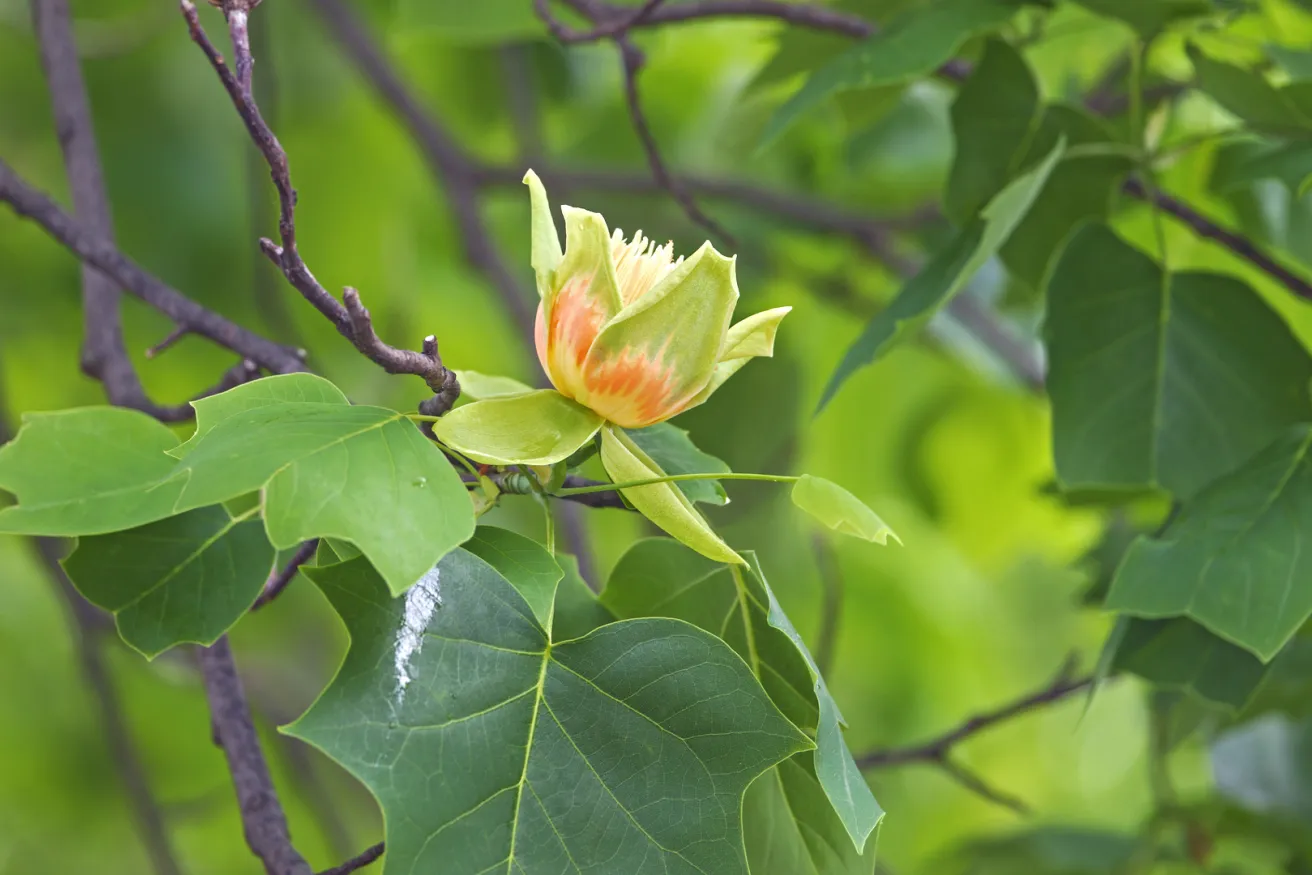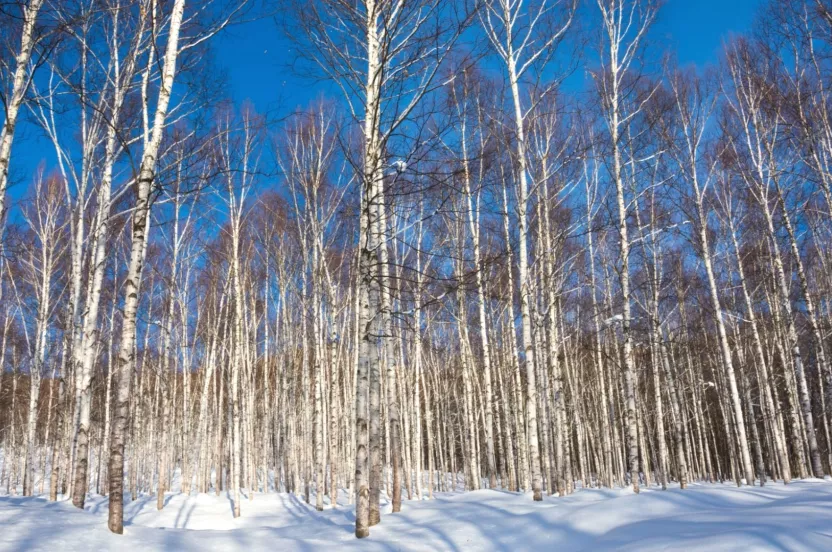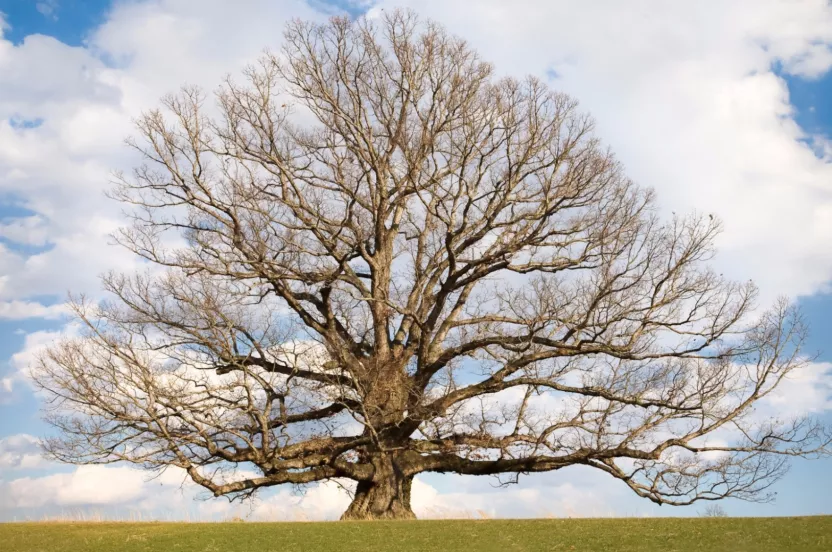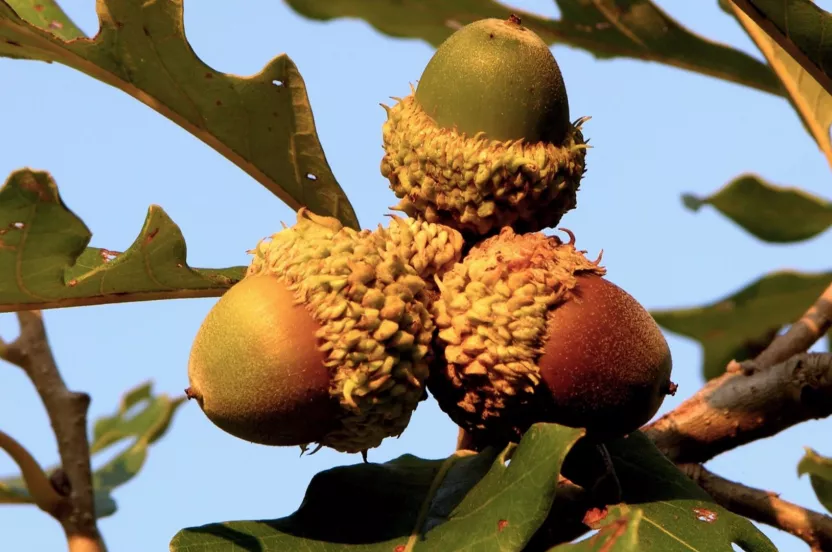The Arbor Day Foundation is pledging 10 million trees to areas impacted by hurricanes Helene, Milton Help us replant
Liriodendron tulipifera
John Tradescant was a gardener to the King of England when he first brought a tuliptree back with him from North America. This foreign tree attracted attention from the locals for its tulip shaped leaves and fast growing height.
The tuliptree is distinguished in many ways—from its beautiful late spring flower show and its almost equally vibrant fall colors, to its place in history and its considerable industrial value. This tree is the tallest of North American hardwoods, growing to 100 feet or more and used in making furniture, cabinetry, musical instruments, and wood veneer. In the early history of the United States, giants 200 feet tall or more were commonly found. Despite its stature, the tuliptree is perhaps most known and loved for its large, yellow and orange, tulip-shaped flowers, which bloom in May and early June. Seen from above, from a hilltop or upper story balcony, these flowers are especially stunning.
But this large tree, which is pyramidal when young and oval at maturity, maintains its beauty throughout the year. Summer leaves are shimmering green, fall foliage is bright gold, and wildlife—attracting fruit remains on the tree long into the winter. The natural range of this hardy, long-lived tree is throughout the East, from southern New England, and Michigan, southward between the coast and the Mississippi River to Louisiana and the northern half of Florida. Tuliptree makes an attractive addition to home landscapes and parks when enough space is available for so grand a tree. (Grows in hardiness zones 4 to 9.)





